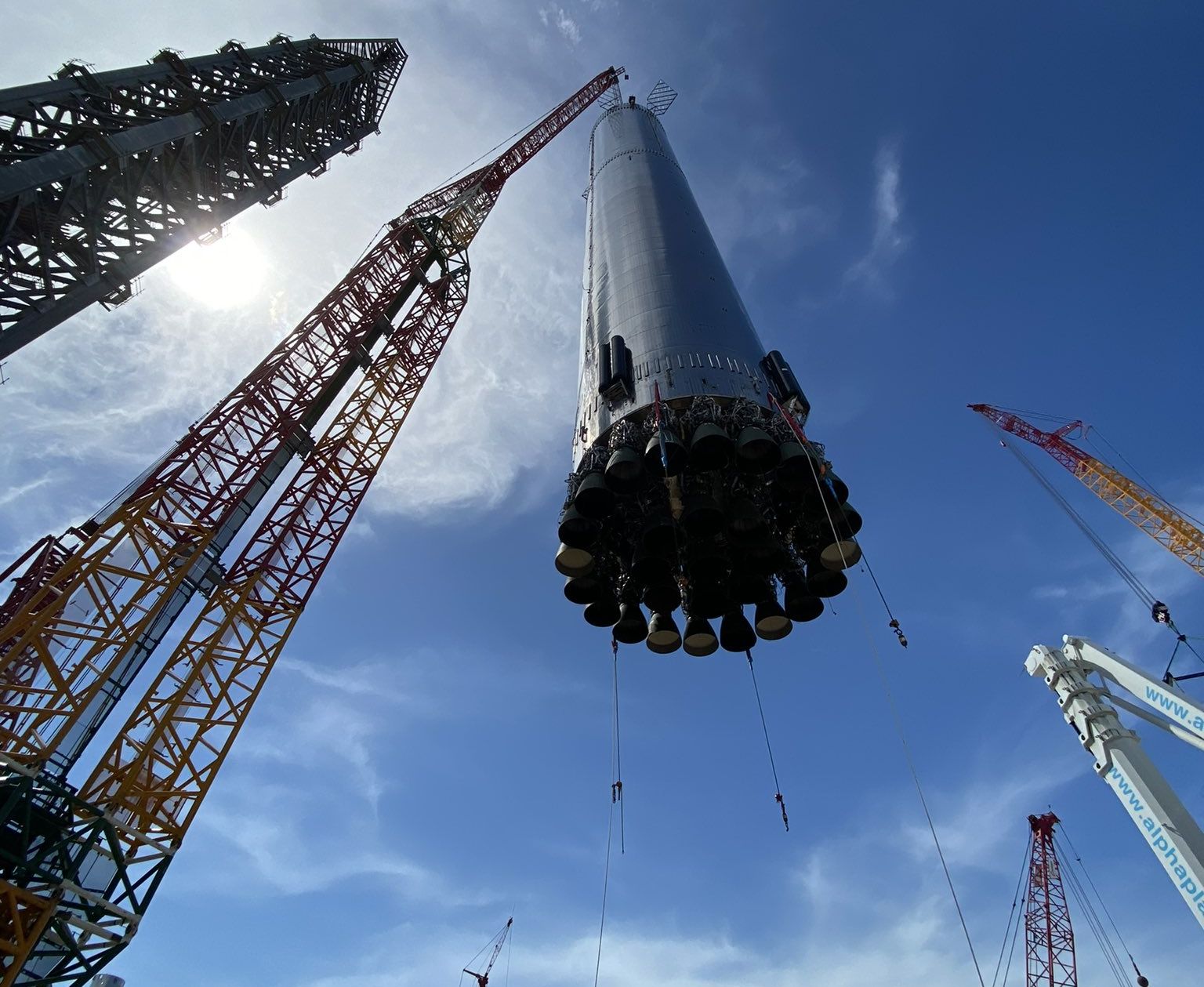Starship 4 Launch Overview

The Starship 4 launch marked a significant milestone in the development of SpaceX’s ambitious Starship program. This launch was a crucial test flight designed to demonstrate the capabilities of the Starship spacecraft and its Super Heavy booster.
In the lead-up to the launch, SpaceX conducted a series of ground tests and simulations to ensure the readiness of the Starship 4 and Super Heavy. These tests included static fire tests, where the engines of the Super Heavy were ignited while the vehicle was secured to the launch pad.
Technical Specifications
The Starship 4 is a fully reusable spacecraft designed to transport crew and cargo to the Moon, Mars, and beyond. It stands at approximately 120 meters tall and has a diameter of 9 meters. The Starship 4 is powered by six Raptor engines, which provide a combined thrust of over 1,200 tons.
The Super Heavy booster is a reusable rocket designed to launch the Starship into orbit. It stands at approximately 70 meters tall and has a diameter of 9 meters. The Super Heavy is powered by 29 Raptor engines, which provide a combined thrust of over 7,200 tons.
Launch Preparations and Procedures

The Starship 4 launch preparations were meticulously planned and executed to ensure a successful launch. The extensive procedures involved rigorous safety protocols, risk assessments, and the utilization of state-of-the-art ground support systems and infrastructure.
Before the launch, a thorough risk assessment was conducted to identify and mitigate potential hazards. This assessment considered all aspects of the launch, including the vehicle’s design, the launch site environment, and the weather conditions. Based on the risk assessment, comprehensive safety protocols were developed and implemented to minimize the chances of accidents or injuries.
Ground Support Systems
The Starship 4 launch was supported by a vast array of ground support systems, including launch pads, telemetry systems, and tracking stations. The launch pad provided a stable platform for the vehicle and housed the necessary infrastructure for propellant loading and launch operations. Telemetry systems allowed engineers to monitor the vehicle’s performance in real-time, while tracking stations tracked the vehicle’s trajectory and provided data for mission control.
Infrastructure
The launch site was equipped with a comprehensive infrastructure to support the launch and recovery operations. This infrastructure included roads, power lines, water systems, and communication networks. It also included facilities for vehicle assembly, propellant storage, and crew quarters. The infrastructure was designed to ensure the smooth and efficient operation of all launch-related activities.
Launch Execution and Performance Analysis: Starship 4 Launch

The launch of Starship 4 marked a significant milestone in the development of SpaceX’s ambitious Starship program. The launch execution was meticulously planned and executed, with the spacecraft performing as expected throughout the ascent and orbital insertion phases. This section provides a detailed account of the launch execution, analyzes the performance of the spacecraft and its various systems, and discusses any anomalies or deviations that occurred during the mission.
The launch commenced with the ignition of the 33 Raptor engines on the Super Heavy booster. The spacecraft lifted off from the launch pad with a thunderous roar, generating immense thrust that propelled it skyward. As the Starship 4 ascended, the Super Heavy booster continued to burn for approximately two and a half minutes, providing the necessary thrust to overcome Earth’s gravity. Once the booster had exhausted its propellant, it separated from the Starship 4 and returned to Earth for a controlled landing in the Gulf of Mexico.
Following the separation of the Super Heavy booster, the Starship 4 continued its ascent powered by its six Raptor engines. The spacecraft transitioned to a gravity turn, gradually adjusting its trajectory to achieve the desired orbital inclination. During the ascent, the Starship 4 experienced maximum aerodynamic pressure, known as Max Q, which occurred approximately eight minutes after liftoff. The spacecraft successfully navigated this critical phase, demonstrating the structural integrity of its design.
Approximately nine minutes after liftoff, the Starship 4 reached orbital insertion. The spacecraft’s engines performed a precise burn to achieve the desired orbital parameters, including altitude, inclination, and velocity. The spacecraft successfully entered a stable orbit around Earth, marking the completion of the launch execution phase.
Performance Analysis, Starship 4 launch
The performance of the Starship 4 during the launch was closely monitored and analyzed. The spacecraft’s systems performed as expected, demonstrating the reliability and efficiency of SpaceX’s design. The engines operated smoothly throughout the ascent, providing the necessary thrust for each phase of the launch. The spacecraft’s guidance and navigation systems also performed flawlessly, ensuring a precise trajectory and orbital insertion.
One notable aspect of the launch was the performance of the Starship 4’s heat shield. The spacecraft experienced significant heating during its ascent through Earth’s atmosphere. The heat shield successfully protected the spacecraft from the intense temperatures, ensuring the integrity of its structure and payload.
Anomalies and Deviations
During the launch of Starship 4, no significant anomalies or deviations occurred. The spacecraft performed as expected, and all systems functioned within their specified parameters. This successful launch demonstrates the maturity of SpaceX’s Starship program and its readiness for future missions.